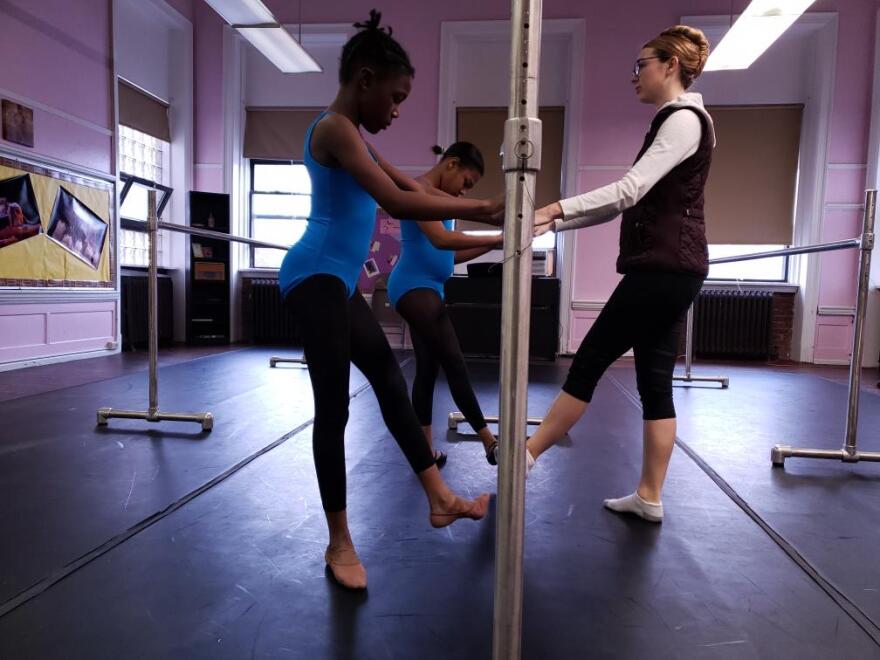A Pittsburgh dance organization is supporting a new initiative for more diversity in professional ballet. The Equity Project: Increasing the Presence of Blacks in Ballet is an effort anchored by the Dance Theater of Harlem, The International Association of Blacks in Dance and Dance/USA. Pittsburgh Ballet Theatre is among 21 major ballet organizations to adopt the agenda.
“This is a huge culture shift in the ballet world, to really look at how we can truly be inclusive what that means and how we are really being equitable” said Christina Salgado, Pittsburgh Ballet Theatre’s Education Director.
She said PBT is in the early stages of developing new diversity policies and strategies that involve everything from administrative changes to the literature they display in their lobby.
“Should we be thinking about the books downstairs, swapping them out so we have people of color in our books as well? How about the photos on the walls?” Salgado said.
Salgado said PBT is making strides in multiculturalism, with company dancers from England, Taiwan, Mexico, Japan, Kazakhstan and Italy. But, she admitted, the changes are not enough.
“And when you look at our racial diversity, we do have two African Americans in the company, and we also have two Hispanics out of 30 [dancers]. There’s still more work to be done” said Salgado.
The lack of racial diversity is not unique to Pittsburgh.
“When you look at an art form, a classical art form like ballet, it’s so Eurocentric," said Salgado. Pink tights, pink shoes and costumes that were not made for the bodies of African American dancers excluded these individuals, said Salgado.
Money also plays a role in the lack of diversity; ballet is expensive. According to research from the data-news site FiveThirtyEight, ballet classes and gear for a dancer at a top tier school can cost upwards of $8,000 per year.
A scarcity of opportunities is also critical when you talk about diversity in ballet, said Veronica Morgan-Lee, Fund Director at Hill Dance Academy Theater.
“Most of our organizations are not inclusive,” said Morgan Lee. “And where there is no inclusivity, there’s usually no diversity, and there is probably no equity in training as well. Because many times students may be in these schools, but they never have a role that will take them to the next level in terms of dancing.”
Part of the mission of Morgan-Lee’s organization is to train dancers in black dance traditions. And while the students at the academy study a number of dance forms, they must master ballet.
“Our students have the terminology, have the language, the decorum, the discipline of ballet, because it’s foundational to everything that they are going to do,” said Morgan-Lee.
Racial issues have plagued ballet since the early twentieth century, when it was believed that black dancers didn’t have the body structure to master ballet. In America, black dancers faced even more racism. Pittsburgh Public Schools Creative and Performing Arts teacher Leslie Anderson-Braswell said such discrimination impacted her as a young professional ballerina in the 1970s. She became a PBT company member in 1971 and danced there for three years before going to work in Europe.
"I left for Europe is because, as an African American, the opportunities were not as good in the United States,” said Anderson-Braswell.
After two years of dancing professionally in West Germany, Anderson-Braswell returned to the U.S. where she worked with the Dance Theater of Harlem, a professional ballet company founded by Arthur Mitchell, the first African-American principal dancer in a major ballet company.
“Two teachers from Pittsburgh Ballet Theatre said it would be important for me to go and see Arthur Mitchell, all black dancers doing the same thing as me; because there were just two of us black dancers at Pittsburgh Ballet Theatre,” said Anderson-Braswell.
Dance schools like Hill Dance Academy Theater are currently working to expand the options for black ballet dancers. Morgan-Lee said many of the academy’s highest-level students, like 15-year old Erika Durden, are moving toward careers as professional ballet dancers. When she was 10, Durden visited the Joffrey Ballet, a Chicago-based dance company that emphasizes diversity. This year, she trained at Alzono King LINES Ballet in San Francisco. The contemporary dance troupe is also known for its multicultural choreography and artistic style.
“So, we know that what we are doing with her in training and the other students in the classes with her is clearly preparing her for the concert stage,” said Morgan-Lee.
Executives from Pittsburgh Ballet Theatre, along with representatives from other ballet organizations involved in the Equity Project, will meet in January at the International Association of Blacks in Dance conference in Dayton, Ohio, to discuss the initiative and set goals for a three-year equity commitment.




